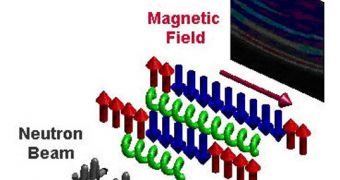For the first time ever, experts have discovered a form of nanoscale symmetry underlying solid state matter. The finding is of tremendous proportions, especially when considering the fact that this symmetry shows all the attributes and traits of the “golden ratio,” the famous concept from paintings and architecture. As we recently reported, objects incorporating the ratio are easier to detect for the human eye than those that break it. Details of the new finding appear in the January 8 issue of the top journal Science, AlphaGalileo reports.
In charge of the new investigations were German experts from the Helmholtz-Zentrum Berlin fur Materialien und Energie (HZB). They worked closely together with British scientists from the Oxford and Bristol universities, as well as with colleagues from the Rutherford Appleton Laboratory, also in the United Kingdom. The basic line of research was Heisenberg’s Uncertainty Principle, which is an effect that promotes the emergence of very peculiar quantum properties in objects at the subatomic level. For this very reason, the macro-atomic world is governed by classical, Newtonian physics, whereas the world of elementary particles is governed by quantum mechanics.
The magnetic material cobalt niobate was selected for this research, as its properties made it easier for researchers to observe the phenomena they were looking for. What the team did was apply a strong magnetic field on the material, at very precise angles. This aligned the spin of electrons inside the magnets, causing the cobalt niobate to be placed in a new state called quantum critical. The group reveals that the state is the quantum version of a fractal pattern. “The system reaches a quantum uncertain – or a Schrödinger cat state. This is what we did in our experiments with cobalt niobate. We have tuned the system exactly in order to turn it quantum critical,” Professor Alan Tennant, the leader of the German part of the experiments, says.
When this happens, “The tension comes from the interaction between spins causing them to magnetically resonate. For these interactions we found a series (scale) of resonant notes: The first two notes show a perfect relationship with each other. Their frequencies (pitch) are in the ratio of 1.618…, which is the golden ratio famous from art and architecture,” Oxford University expert Dr. Radu Coldea adds. This “reflects a beautiful property of the quantum system – a hidden symmetry. Actually quite a special one called E8 by mathematicians, and this is its first observation in a material,” he shares.

 14 DAY TRIAL //
14 DAY TRIAL //